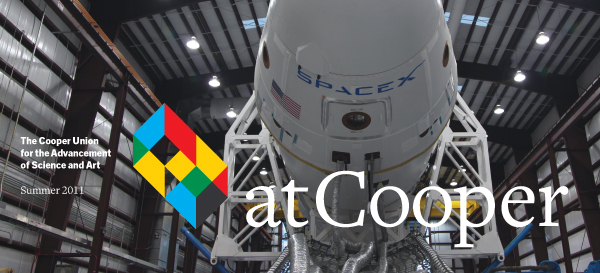Circumnavigating the Dead Sea: Salome Balderrama (AR’11) and Daphne Binder (AR’11)
POSTED ON: June 1, 2011



During our time at the Irwin S. Chanin School of Architecture at The Cooper Union we learned that architecture, among other things, is revealing of mankind’s relationship to the environment. Whether through an analysis of how a building relates to its site or how an inhabitant relates to the building, it was through investigations in drawings, models and photographs that we learned to explore the wealth of knowledge inherent in architecture.
During our fourth year at Cooper, we proposed an architectural exploration of the Dead Sea.We were drawn to the Dead Sea on the border of Israel and Jordan—an ancient saline body of water with a unique chemical composition—because some of civilization’s first settlements were built on its shores. Unfortunately, like many other bodies of water today, it is in a stressed environmental condition. For more than 50 years now, the Dead Sea’s water level has been dropping and its perimeter receding due to human development.
The region’s ecology, population and built environment are changing and its future is uncertain. We wondered: What does it mean to walk around a landscape so altered by man-made intervention? What can we learn about the exploitation of natural resources, the transformation of historical symbols of culture, and the constant shifting of international borders? We could only formulate a complete study of the sea if we investigated it from all directions and perspectives—negating the international border that splits the sea in half and circumnavigating it. We received the Benjamin Menschel Fellowship for Creative Inquiry for our proposal and went on a month-long expedition to the site in the summer of 2010.

At Cooper, we learned that drawing and documentation is the most instructive method for a better understanding of a site. To comprehend the Dead Sea region then, we knew we had to document the different sites of its shores. Our journey took us through places where people live, work and visit, across international border crossings, and into the water itself. We documented factories, archeological sites, settlements, tourist resorts, scientist stations and nature reserves. We observed the consequences of the drop in water level, the sea’s receding perimeter and the shores scarred by sinkholes. We documented the current built environment alongside the natural one in a series of maps, plans, photographs and interviews that we exhibited at the Cooper Union in November 2010.
The project cultivated our understanding of the region’s culture, ecology, infrastructure and geopolitics. It further provided a basis for Daphne Binder’s thesis project—a proposal for a series of road stations for travelers along the shores of the sea with integrated grey and black water treatment. The project sensitized us to the delicate relationship between man, land and water and instilled a deep awareness of the magnitude of our responsibility for the environment as architects entering the professional field.





